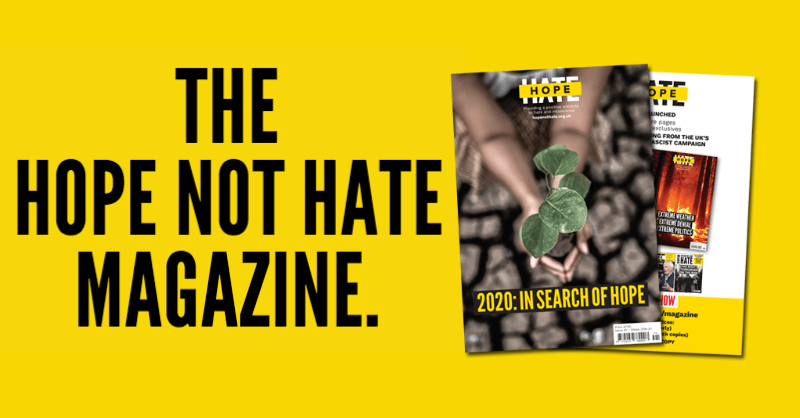HOPE not hate uses cookies to collect information and give you a more personalised experience on our site. You can find more information in our privacy policy. To agree to this, please click accept.
1. Age continues to be a key dividing line, and in fact the age divide has increased even further since 2017. Labour had a 43…

1. Age continues to be a key dividing line, and in fact the age divide has increased even further since 2017. Labour had a 43 point lead among voters aged 18-24 (the Conservative share actually fell eight points among this group), but the Conservatives had a 47 point lead among those aged 65+ (among whom Labour’s vote share fell by 8 points).
2. The long-term realignment in class continued, with the Conservatives ahead even among C2DE social classes. Labour lost votes among all social classes, while the Conservatives increased their vote share by three points among C2DEs.
3. There was a gender gap, with the Conservatives ahead of Labour by 15 points among men, and by nine points among women. However, the swing from Labour to the Conservatives was similar among both men and women, with the Labour vote share falling by roughly the same amount among men and women. The age gap is especially noticeable among women (younger women are particularly Labour, older women particularly Conservative), although it was actually among younger men that Labour made its biggest gains. On the other hand, it is among men in social class DE, and 35-54s among the same class, where the Conservatives won the biggest swing from Labour.
4. The Conservatives held on to more of their 2017 vote than Labour. The Conservatives won 88% of the vote from their 2017 supporters, while Labour won 80% of their 2017 vote. The Liberal Democrats won just over six in 10 (63%) of their 2017 base, although attracted roughly equal levels of support from 2017 Conservative and Labour voters.
5. The Conservatives had a clear lead among Leave voters, but Remain voters were more split. The Conservatives had a 73% to 15% lead over Labour among Leave voters, representing an 8.5 point swing to Boris Johnson’s party since 2017. Among Remain voters, just under half (48%) voted Labour, 21% Liberal Democrats, and 20% the Conservatives. Nine in 10 (92%) of 2017 Conservative Leave voters voted Conservative, but 65% of 2017 Labour Leave voters voted Labour. On the other hand, 85% of 2017 Labour Remain voters voted Labour, while 73% of Conservative Remain voters voted Conservative. The Conservatives, though, lost more of their 2017 Remain vote to the Liberal Democrats (19%), while 23% of 2017 Labour Leave voters voted Conservative.
6. The Conservatives clearly won among non-graduates, graduates themselves were more split. There was a 9.5 point swing from Labour to the Conservatives among those with no qualifications (this will partly reflect their older age profile, though this may not be the only factor). Among graduates, 39% said they voted Labour, 34% the Conservatives, and 17% the Liberal Democrats.
7. Labour had a strong lead among BAME voters, although its vote share fell roughly the same amount among both white and BAME groups. Among BAME voters, Labour led the Conservatives by 64% to 20%, while among white voters the Conservatives led by 48% to 29%. However, Labour’s vote share fell a similar amount since 2017 among both groups, by 9 points and 10 points respectively.
8. Turnout estimates should be treated with caution, but show a broadly similar pattern to previous elections of higher turnout among older people and graduates, and lower among younger people, renters and BAME voters.
FIND OUT MORE: Ipsos MORI
